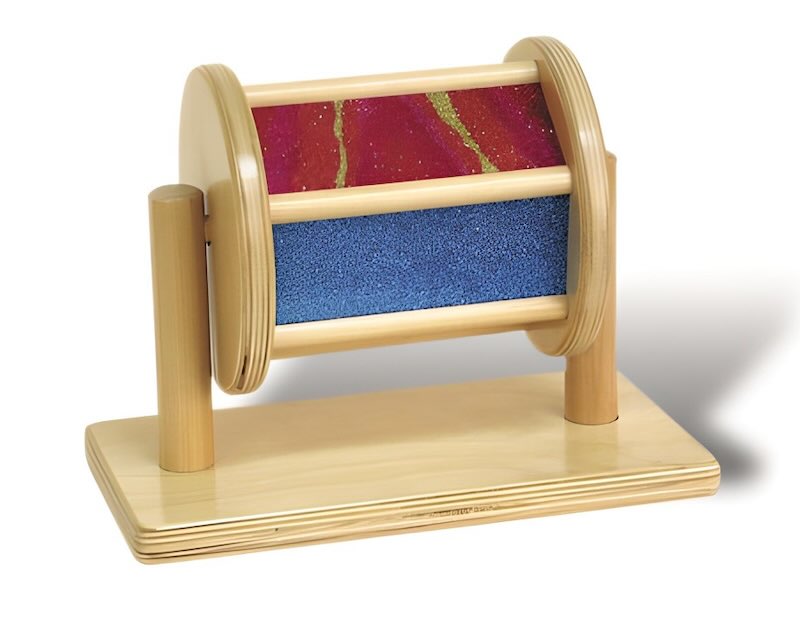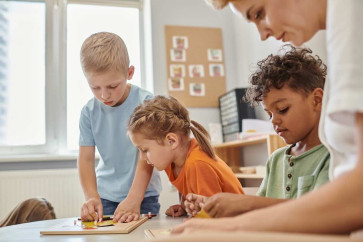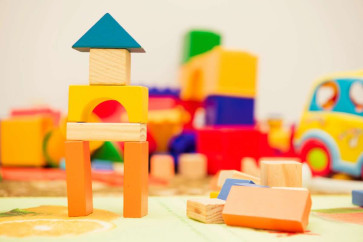Are you ready to spark your child's imagination and foster their creativity? Look no further than the magic of Montessori and its incredible spinning drum. This innovative educational tool has been captivating children and educators alike for decades, offering a unique approach to learning and self-expression.
The Montessori method encourages children to engage with their environment through hands-on activities and exploration. The spinning drum is a perfect example of this philosophy in action. As children spin the drum, they are not only having fun, but they are also developing essential cognitive and motor skills. Through the drum's mesmerizing motion and the sounds it produces, children are encouraged to express themselves in new and exciting ways.
The beauty of the spinning drum lies in its simplicity. It requires no batteries or complicated instructions – just a child's imagination and eagerness to learn. With endless possibilities for creativity, the spinning drum helps children unleash their artistic potential and develop a strong sense of self-confidence.
Discover the wonders of Montessori and watch as your child's creativity flourishes. Join the countless parents and educators who have embraced the magic of the spinning drum to unlock their child's unlimited potential.
The Importance of Creativity in Early Childhood Development
Creativity plays a vital role in a child's overall development. It helps them think outside the box, problem-solve, and express themselves freely. In today's fast-paced world, where standardized tests and academic achievements often take center stage, nurturing creativity is more important than ever.
Early childhood is a critical period for fostering creativity. It is during these formative years that children's brains are most receptive to new experiences and learning. By providing them with opportunities to explore their creativity, we can help them develop a strong foundation for future success.

What is the Spinning Drum in Montessori Education
The spinning drum is a simple yet powerful tool used in Montessori education to engage children in hands-on learning and self-expression. It consists of a wooden or plastic drum with a handle and a rope attached to it. As children hold the handle and spin the drum, the rope winds around it, producing a rhythmic sound.
Maria Montessori, the renowned Italian educator, believed that children learn best through active engagement with their environment. The spinning drum perfectly embodies this philosophy by encouraging children to use their hands and explore the world around them.
Discover the Magic of Motion!
Unleash your child's potential with the Montessori Spinning Drum, a captivating sensory experience designed to engage and delight.
Explore the Spinning DrumHow the Spinning Drum Promotes Creativity
The spinning drum offers a unique sensory experience that stimulates a child's creativity in multiple ways. As children spin the drum, they are captivated by the mesmerizing motion and the sound it produces. This sensory input sparks their imagination and encourages them to express themselves in new and exciting ways.
The rhythmic sound of the spinning drum acts as a catalyst for creative thinking. Children are naturally drawn to the beat and melody, which inspires them to move their bodies, dance, and create their own music. This rhythmic exploration not only enhances their motor skills but also fosters their ability to think creatively and express themselves through movement.
Furthermore, the spinning drum provides a medium for children to experiment with different patterns and rhythms. They can vary the speed and force with which they spin the drum, creating a wide range of sounds. This experimentation allows children to explore the concept of cause and effect while also promoting their ability to think critically and problem-solve.
Benefits of Using the Spinning Drum in the Classroom
Integrating the spinning drum into the classroom setting offers numerous benefits for children's overall development. Here are some of the key advantages:
- Enhanced Cognitive Skills : The spinning drum engages children's cognitive abilities as they explore patterns, rhythms, and cause-effect relationships. It promotes critical thinking, problem-solving, and creativity.
- Improved Motor Skills : Holding and spinning the drum requires fine motor skills, hand-eye coordination, and finger dexterity. Regular use of the spinning drum helps children develop these essential motor skills.
- Self-Expression and Confidence : The spinning drum provides a platform for children to express themselves freely. As they experiment with different sounds and rhythms, they gain confidence in their creative abilities.
- Collaboration and Communication : The spinning drum can be used in group activities, encouraging children to collaborate, communicate, and work together towards a common goal. This promotes social skills and teamwork.
- Emotional Regulation : The rhythmic sound and motion of the spinning drum have a calming effect on children. It can help them regulate their emotions, reduce stress, and enhance focus and concentration.
Tips for Incorporating the Spinning Drum into Montessori Activities
Introducing the spinning drum into your Montessori activities can be a fun and rewarding experience for both you and your child. Here are some tips to get you started:
- Create a Musical Ensemble : Combine the spinning drum with other musical instruments, such as bells, shakers, or xylophones, to create a mini musical ensemble. Encourage your child to experiment with different sounds and rhythms.
- Storytelling and Dramatic Play : Use the spinning drum as a prop during storytelling or dramatic play sessions. Encourage your child to create sound effects that enhance the story or add rhythm to their play.
- Outdoor Explorations : Take the spinning drum outdoors and explore the soundscape of nature. Encourage your child to listen to the sounds of birds, wind, and water, and create their own rhythms inspired by the environment.
- Sensory Play : Combine the spinning drum with sensory materials such as sand, water, or rice. As your child spins the drum, they can listen to the sound while feeling the different textures, enhancing their sensory experience.
- Musical Games : Create fun musical games using the spinning drum. For example, you can play a game of "Simon Says" where your child has to mimic the rhythm you create on the drum.
DIY Spinning Drum Ideas for Home or Classroom Use
Making your own spinning drum can be a great DIY project that you can enjoy with your child. Here are a few simple ideas to get you started:
- Cardboard Tube Drum : Take a cardboard tube (such as an empty paper towel roll) and attach a string to one end. Decorate the tube with colorful paper or stickers, and you have a homemade spinning drum.
- Recycled Material Drum : Find a round plastic container with a lid, such as an empty yogurt or ice cream tub. Make a small hole in the center of the lid and attach a string through it. Decorate the container with paint, markers, or adhesive tape to personalize it.
- Wooden Drum : If you have access to woodworking tools, you can create a more durable wooden spinning drum. Cut a round piece of wood, drill a hole in the center, and attach a handle and string. Sand the edges and decorate the drum with non-toxic paint.
Remember to always supervise your child during play and ensure that the materials used are safe and age-appropriate.
Explore, Play, and Learn!
Step into a world of discovery with our diverse collection of Sensory Toys designed to stimulate your child's development in fun and engaging ways.
Browse Sensory Toys






